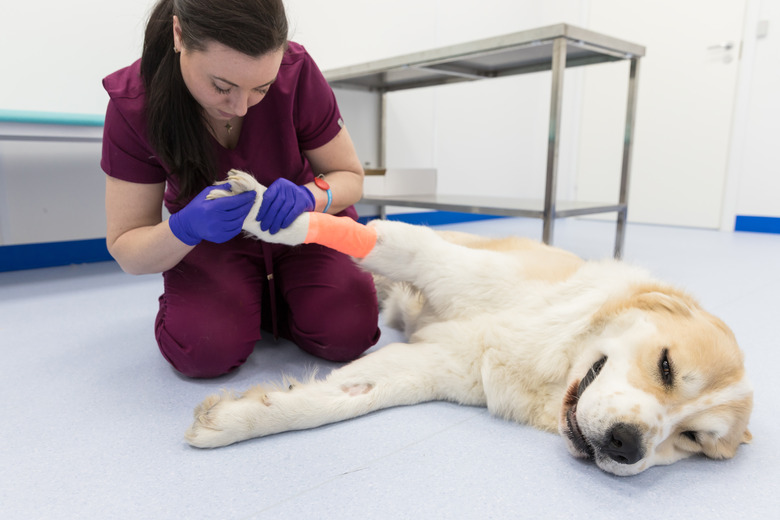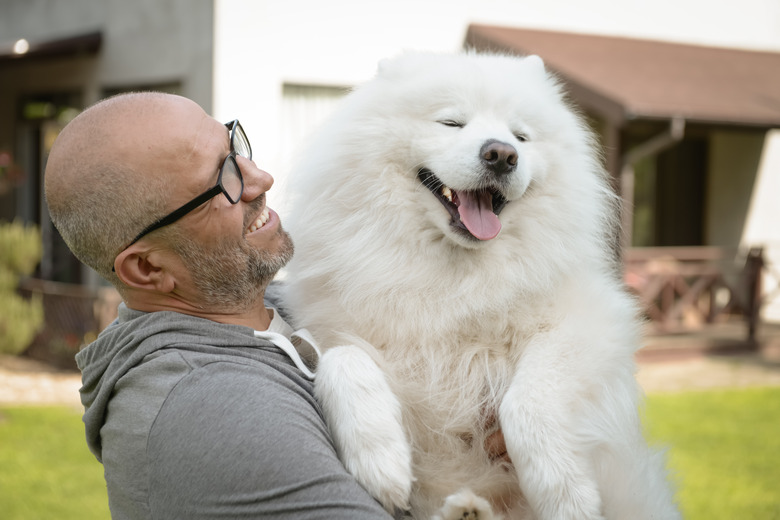Open Sore On Dogs: Treatment & Causes
Dogs are curious and love to investigate, dig, and run through bushes and tall grass. They are also playful and often enjoy wrestling with other dogs. Sometimes, these activities can lead to accidental injuries, such as scrapes, bite wounds, and cuts. We spoke with Dr. Shagufta Mulla, a veterinarian with a DVM degree from Colorado State University with 20 years of experience as a small animal veterinarian, to talk to us about open sores, which can occur on paws, anywhere on the body, or even on the face and tail. These can be painful and can quickly become infected. Even if an injury or open sore appears minor, it is essential to seek veterinary attention quickly to determine what kind of care is required.
If your pet has an open wound, take care if your dog is outside in the yard so that they aren't rolling around and getting the wound dirty. Also take care if there are flies, either indoors or outdoors. Flies commonly lay eggs in wounds, which can lead to maggots. "Don't leave your dog outside in the yard unattended at all during fly season," stresses Dr. Mulla.
Treatment for dog hot spots or an open wound
Treatment for dog hot spots or an open wound
Hot spots are irritated skin caused by excess scratching. This can be from flea bites or allergies, leading to hair loss and swollen, red skin in the affected area. It is important to determine the underlying cause of the skin lesions so they can be treated. A wound from something like a burn (leading to blisters), a puncture, or something like that will usually be deeper and more severe than a hot spot.
If you notice that your dog has an open sore or wound, keep your dog calm and if possible, examine it carefully. "If your pet is bleeding, apply gentle pressure with a clean, dry towel or bandaging material if you have it," says Dr. Mulla. "Avoid cotton balls because they may leave fibers behind, making cleaning more difficult." Do not use antibiotic ointments, creams, alcohol, hydrogen peroxide, essential oils, or any topical medicine on the affected area. These may cause further damage and interfere with healing.
If you can, raise the injury above the dog's heart to reduce blood loss. Sometimes, it can be difficult to see or find an injury if it occurs on a part of the body that is difficult to access, if it is a puncture wound, if the dog is in pain, or if the dog has a long or thick coat.
If trying to find the injury is going to distress the dog but you notice blood loss, wrap the entire area loosely with a towel or clean cloth. The most important thing with any open wound is to seek veterinary attention immediately. Sometimes, an open sore can look small from the outside but will be much deeper and more serious under the dog's skin.
Veterinary examination for an open sore on a dog
Veterinary examination for an open sore on a dog
Pet owners should take a dog with an open sore to their DVM as soon as possible to prevent infection or more serious complications. During the initial examination, your veterinarian will evaluate the wound to determine its size and depth. They will see if any skin is missing, if there is dead tissue, or if there is debris that needs to be flushed or removed.
In some cases, your veterinarian will recommend sedation if your dog is in too much pain for a close examination, if your dog is distressed, or if the wound may require sutures. "If the pet is too in pain to allow a proper exam while awake, sedation might be needed," explains Dr. Mulla. "In this case, you might be given a rough estimate and either asked to wait or plan to get a call after your pet is sedated or anesthetized." Dr. Mulla explains that while under sedation or anesthesia, your veterinarian will clip fur from the wound and flush it with normal saline. Depending on the extent of the injury, you may be sent home while your veterinarian examines and treats your dog, as they may wish to monitor your dog's recovery from the anesthetic.
While your dog is sedated, your veterinarian will clip the fur around the wound, remove debris, and flush and clean it thoroughly with a standard saline solution. This will allow them to decide if suturing is necessary or whether to leave the wound open.
Aftercare for wounds on dogs
Aftercare for wounds on dogs
When your dog is discharged, your veterinarian will give you specific instructions for caring for your dog's wound. They may prescribe topical medication, antibiotics, or anti-inflammatories. "It's also possible your veterinarian may send you home with a dilute chlorhexidine solution," to assist with cleaning and wound care, says Dr. Mulla. They may also prescribe pain relief medication. Follow your veterinarian's guidance closely to prevent more serious complications. Do not apply anything to the wound that your veterinarian has not recommended.
"If your pet needs a topical medication, your veterinarian will send one home," says Dr. Mulla. "If the wound is on a paw, it is going to be more challenging to keep clean. In that case, your veterinarian may bandage the area and instruct you on how to change bandaging at home and when you would need to return for a follow-up."
The wound may be bandaged. Your veterinarian will provide directions on how to replace the bandage and how frequently. In some cases, you will be asked to return to the veterinary clinic every few days to monitor the condition of the wound and the healing process. Your veterinarian will advise you on the most appropriate ways to prevent your dog from licking, chewing, or scratching the injury according to its location on the body. In some cases, an Elizabethan collar may be necessary.
Close supervision and management of your dog will be necessary to ensure that they do not reopen the wound if sutured or get it dirty. During recovery, it is best to walk them on a leash, even in your yard. If your dog becomes bored during this period, include calm enrichment activities in their daily routine to provide them with mental stimulation.
Drainage for wounds on dogs
Drainage for wounds on dogs
Some injuries require fluid drainage and are left open. Your veterinarian may ask that you apply a warm, damp compress two to three times a day for 10 to 15 minutes to encourage drainage. Sometimes, a latex tube may be stitched into a partly sutured wound. This is called a Penrose drain and helps remove unwanted fluid and pus from abscesses and deep injuries during the healing process. "If a drain is present, you can expect colored discharge," notes Dr. Mulla.
When you are applying warm compresses, use this time to gently remove any crust or debris from around the drain. There may be minimal swelling and some redness where the drain enters the skin. "To encourage fluid drainage, whether a dog has a drain or not, your veterinarian may have you apply a warm, moist compress using warm water plus a cloth like a washcloth, to the wound for 10 or 15 minutes, two to three times a day," says Dr. Mulla. "If there is a drain, this is also a good time to remove any crusty debris from around the openings in the skin where the drain enters and exits." Contact your veterinarian immediately if you notice active bleeding or unpleasant discharge.
The bottom line
The bottom line
Open sores or wounds on dogs always require veterinary attention. In an emergency, if there is active bleeding, you can gently apply pressure with a clean towel or bandage. Your veterinarian will determine possible causes (insect bites, mange, a skin disorder, etc.) and whether the wound requires stitches or drainage. The veterinarian will provide detailed aftercare instructions. Proper management and supervision during the healing process will help to prevent further injury or infection.


